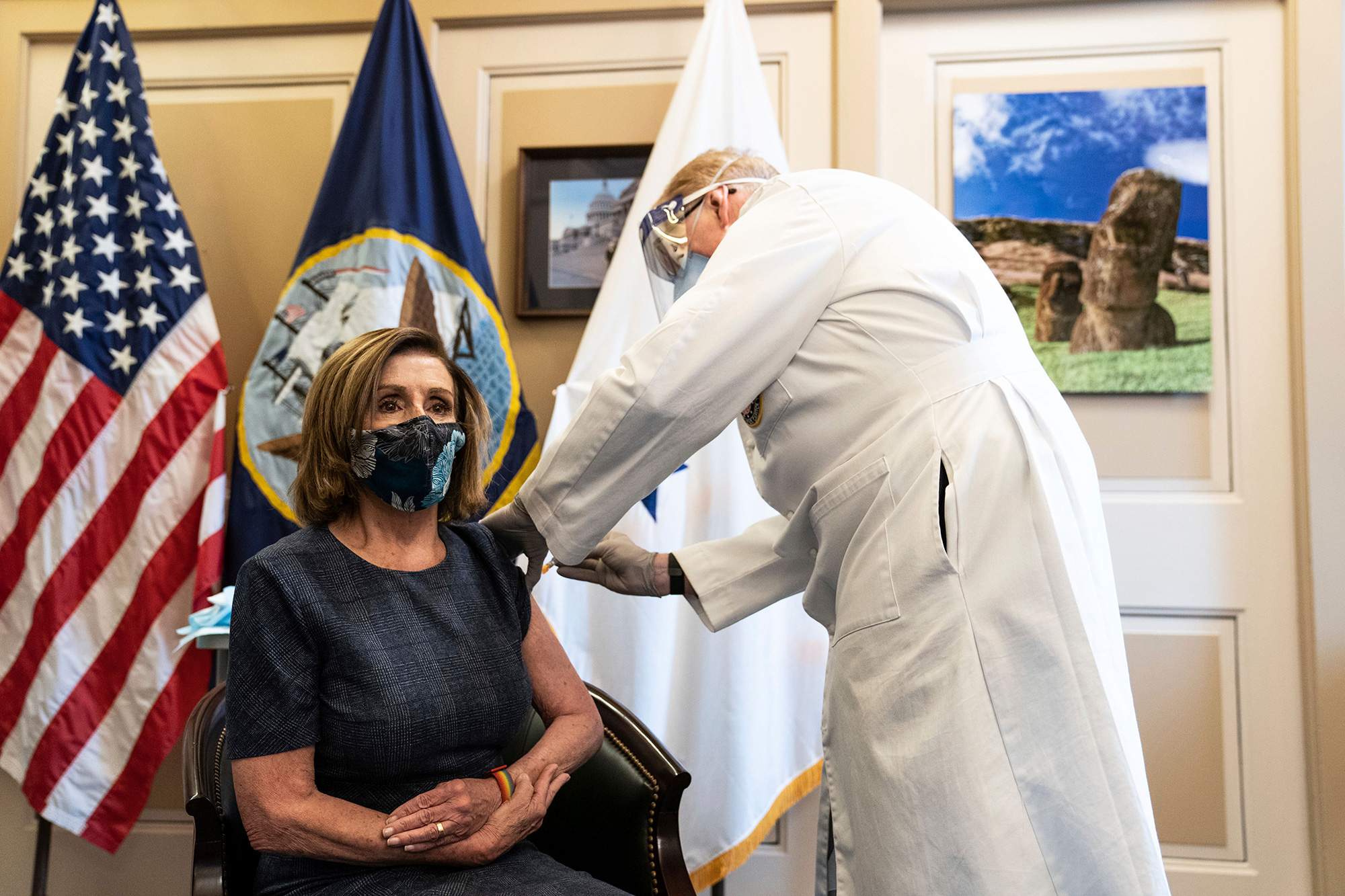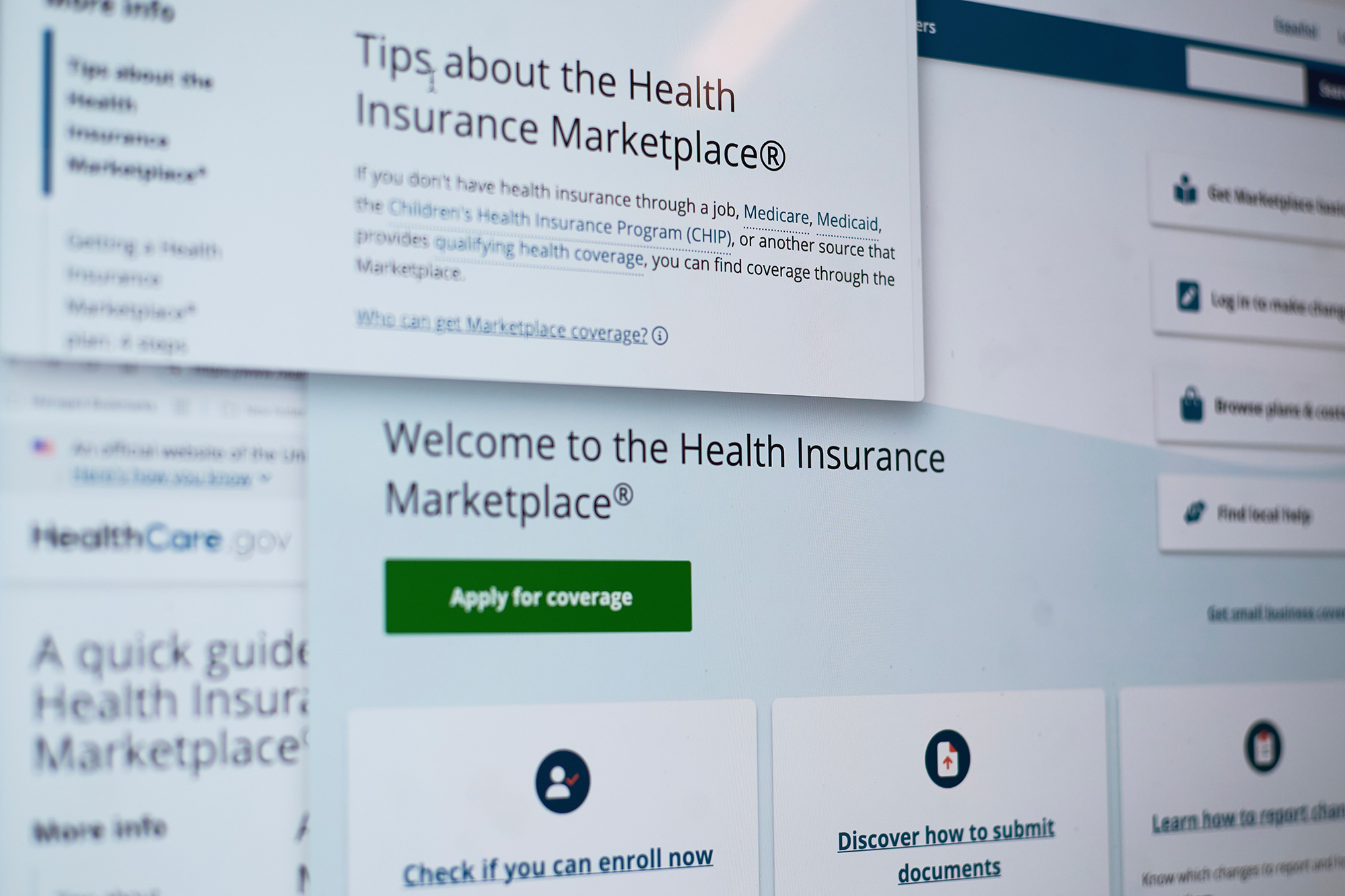Pandemic-era subsidies and new Medicaid changes are driving the standoff, even though neither directly affects the shutdown itself.
The federal government has been shut down for over a week now.
Why? It depends on who you ask.
Congressional Democrats “have made a decision that they would rather give taxpayer funded benefits to illegal aliens, than to keep the doors open for the American people,” according to Republican Speaker Mike Johnson.
Vice President JD Vance agreed, “Senate Democrats are shutting down the government and holding the economy hostage because they want to reinstate those benefits for illegal aliens.”
But Democrats say that isn’t true.
House Democratic leader Hakeem Jeffries said “Donald Trump and Republicans have decided to shut the government down so they can continue to gut the health care of the American people.”
Senate Democratic leader Chuck Schumer was on the same page. “Donald Trump and Republicans have barreled us into a shutdown because they refused to protect Americans’ healthcare,” he argued.
Both parties have mastered the blame game. But partisan bickering won’t re-open the government, and it won’t address anyone’s healthcare concerns.
So, what’s really going on in the healthcare fight?
Underneath all the soundbites, there are really two separate healthcare fights tangled together:
- Whether to extend the “enhanced” Affordable Care Act (ACA or “Obamacare”) subsidies that were created during Covid,
- Whether to roll back the Medicaid rules Republicans passed earlier this year as part of their One Big Beautiful Bill.
Neither of these issues require a government shutdown to solve. But let’s take them one at a time to see what the fight is about.
What Are Enhanced ACA Subsidies?
When the ACA was passed in 2010, it authorized and incentivized states to create exchanges where individuals could buy health insurance. The law provides subsidies – in the form of health insurance premium tax credits – for Americans below a certain income level who don’t qualify for coverage through Medicaid.
Before the pandemic, those subsidies were only available to people making between 100% and 400% of the federal poverty level (FPL), which currently comes out to $15,650 to $62,600 for an individual, or $32,150 to $128,600 for a family of four.
During the Covid pandemic, Congress temporarily changed the rules. In the 2021 American Rescue Plan, they removed the income limit entirely; anyone could qualify for the subsidies if their premiums exceeded 8.5% of their income. In a state like Vermont that has high premiums, the math works out to individuals making as much $180,000 a year qualifying for government assistance.
As of now, these enhancements expire at the end of 2025.
The Effects of ACA Enhancements
Democrats didn’t just see the subsidy expansion as a short-term Covid fix; many wanted it to last long after the pandemic subsided. In a 2022 speech, President Biden urged “Congress to make permanent the ACA subsidies,” even though they were only authorized for a few years to limit the on-paper price tag.
And the policy has, in practice, reshaped the health insurance landscape:
- Marketplace enrollment exploded, from 9.2 million people pre-2021 to 21.8 million this year.
- The share of employees who enroll in job-based insurance fell from 73% to 65%. Critics say this suggests many people who technically have access to coverage are signing up for subsidized marketplace plans instead – in part because the federal rules that are supposed to block that aren’t heavily enforced.
Taxpayers are on the hook. Extending the subsidies would cost about $350 billion over the next decade.

The ACA Subsidies and Immigration
Despite all the rhetoric, when the ACA enhanced subsidies were passed, they did not expand eligibility to include undocumented immigrants. The Covid-era changes focused on income levels, not immigration status. Both before and after the law was passed, undocumented immigrants are not eligible for the ACA enhanced subsidies or Medicaid.
However, legal immigrants – permanent residents with Green Cards, people here on work or student visas, refugees seeking asylum, people with “Temporary Protected Status” – are eligible. Today, 3.3 million legal immigrants receive ACA subsidies compared to 1.4 million before the expansion.
Dreamers, people who were brought here illegally as children by their parents, were briefly allowed to take the ACA subsidies under President Biden, but President Trump changed that rule. That was all done by executive action and has nothing to do with Congress’s current debate.
Medicaid Reform
Medicaid is the joint federal–state program that provides health coverage for low-income Americans. The federal government covers most of the cost, while states administer the program and pay the rest.
About 70 million people nationwide are covered by Medicaid.
Earlier this year, Congress passed the One Big Beautiful Bill, a sweeping “budget reconciliation” package that included the biggest Medicaid overhaul in more than a decade. Republicans said the goal was to strengthen program integrity and rein in fraud and spending. Democrats called it a backdoor cut that would push millions off coverage.
How Republicans Changed Medicaid
The law didn’t change Medicaid’s income limits; people making up to 138% of the federal poverty line can still qualify. But it did remove certain categories of legal immigrants who were previously eligible for Medicaid and changed conditions for staying enrolled.
The key changes include:
- More frequent eligibility checks. States must now reverify Medicaid eligibility twice a year instead of once. They’re also required to run ongoing database checks against death records and address changes to automatically remove people who no longer qualify.
- Work requirements. Able-bodied adults between the ages of 19 and 64 must now spend 80 hours per month working, volunteering, looking for a job, or doing school/job training.
- Stricter citizenship verification. States must receive electronic or documentary proof of citizenship before enrolling someone in Medicaid. Previously, they could enroll immediately and try to confirm citizenship later.
- Provider tax limits. States have long used taxes on hospitals and nursing homes to bring in extra federal matching dollars. They raise taxes on providers, count the revenue as their share of Medicaid, get the federal government to match that revenue, and then funnel the money right back to the providers by increasing Medicaid reimbursement rates. Republicans closed that loophole, banning new provider taxes and gradually lowering the cap on existing ones from 6% of net patient revenue to 3.5% by 2032.
- Immigration eligibility. Permanent resident Green Card holders (after a five-year waiting period) are now the only non-citizens allowed on Medicaid. Previously, refugees and asylum seekers could receive Medicaid. An estimated4 million non-citizens will lose Medicaid coverage.
Effects of Medicaid Cuts
The Congressional Budget Office estimates that these provisions will reduce federal Medicaid spending by about $911 billion over the next decade and result in roughly 7.5 million fewer people covered by 2034.
Republicans argue these steps will prevent waste, close eligibility loopholes, and preserve Medicaid for the truly needy. Democrats counter that the new rules will cause eligible Americans to lose coverage simply because of red tape.
What This Fight Is Really About
If you strip away the partisan messaging, this shutdown isn’t really about healthcare or benefits for immigrants. The government would still be closed even if both sides agreed tomorrow on these health provisions.
The shutdown is a leverage play, with each party using the healthcare fight to frame who’s to blame.
What the disagreement comes down to is how far the federal government should go in sustaining the pandemic-era expansion of health programs.
Both sides have a case. The ACA enhancements made coverage more affordable for millions, but also pushed federal costs higher and extended subsidies far up the income ladder. The Medicaid reforms may cut waste but will almost certainly reduce coverage for people who should otherwise qualify.
For now, both parties are still talking past each other – and millions of Americans are caught in the middle.
Related
Peyton Lofton
Peyton Lofton is Senior Policy Analyst at No Labels and has spent his career writing for the common sense majority. His work has appeared in the Washington Examiner, RealClearPolicy, and the South Florida Sun Sentinel. Peyton holds a degree in political science from Tulane University.






You must be logged in to post a comment.